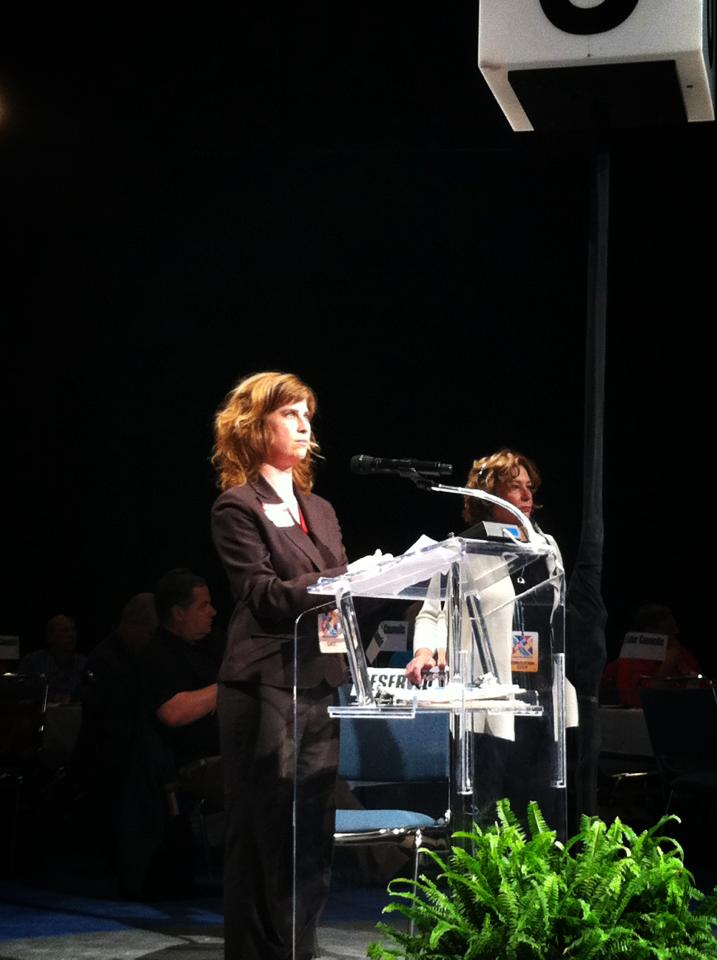

Share
The AFL-CIO sent a strong message Sunday that it welcomes the participation – and leadership – of young workers by adopting a measure that gives them greater voice in the nation’s largest labor federation.
Several hundred delegates from unions across the country are meeting in Los Angeles to decide the policies that will move the labor movement forward. On the first day of the four-day AFL-CIO convention, they chose to focus on outreach to younger workers.
Minnesotan Jessica Hayssen was among the young workers who said they deserve – and want – a greater role in their unions.

“Young people under 35 account for nearly 36 percent of the current workforce and that number will grow,” said Hayssen, field director of the Minnesota AFL-CIO and coordinator of the state’s young workers’ group.
“But not enough younger workers have the opportunity to improve their lives through labor unions, nor do they have the chance to become active in labor organizations,” she said, addressing convention delegates.
“We need to do more than invite young workers to a meeting or sign them up to an e-mail list . . . We don’t have to change our priorities or our core values to get young people’s attention, but we have to figure out how to engage them.”
Such frank discussion would have been rare at past AFL-CIO conventions. But those gathered in Los Angeles clearly recognize the dire circumstances facing the labor movement and American workers as a whole. For the last 100 years, unions have provided the economic and political clout to maintain a strong middle class. With union membership at near-historic lows, the gains made by workers – from decent wages and benefits to retirement security – are in jeopardy.
Delegates overwhelmingly approved a resolution to give younger workers a stronger role.
“Young workers are part of the largest generation to enter the workforce since the baby boomers,” the resolution noted. “People born between the late 1970s and today also make up the most diverse and technologically savvy generation in America’s history; however, young workers suffer the nation’s highest unemployment and have the fewest job opportunities in today’s economy.
“The continued strength and energy of the labor movement depends deeply on the ability of younger union members to develop into effective labor leaders.”
Specifically, the measure transforms the Young Worker Advisory Committee into the Young Worker Organization, with a representative on the AFL-CIO General Board.
It also calls on the Young Worker Organization to work within the AFL-CIO at state and local levels to reach out to more young people, with the goal of tripling the number of young worker organizations in the United States from 40 to 120 in the next four years.
A large number of young union members are delegates to the convention. The AFL-CIO could not provide exact statistics, but said it was a huge increase from previous gatherings.
Speaking at a Diversity Conference held prior to the AFL-CIO convention, Tahir Duckett, coordinator of the AFL-CIO Young Worker Program, made the case for greater involvement by his generation.
“The status quo – the way we have always done things – is not enough to build the inclusive labor movement of the future,” he said.
Speakers at the AFL-CIO convention noted the pivotal role young people have played in activism, from the protests against Governor Scott Walker’s union-busting in Wisconsin to the Occupy Wall Street movement and the “Dreamers” – young people advocating for reform of the nation’s immigration laws and policies.

